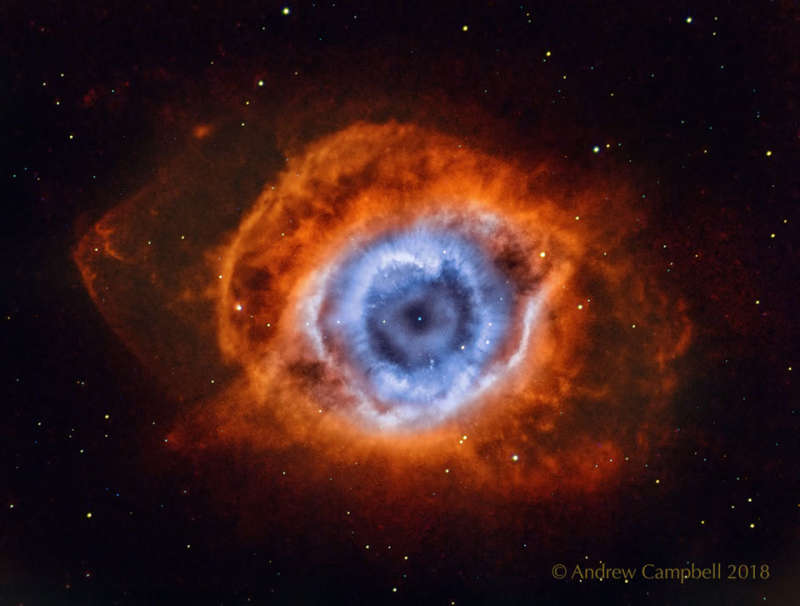Credit & Copyright: Andrew Campbell
Explanation:
Is the Helix Nebula looking at you?
No, not in any biological sense, but it does look quite like an eye.
The Helix Nebula is so named because it also appears
that you are looking down the axis of a
helix.
In actuality, it is now understood to have a surprisingly
complex geometry, including radial filaments and extended
outer loops.
The Helix Nebula (aka NGC 7293) is one of brightest and closest examples of a
planetary nebula, a gas
cloud created at the end of the life of a Sun-like star.
The remnant central stellar core, destined to become a white dwarf star, glows in light so
energetic
it causes the previously expelled gas to
fluoresce.
The
featured picture,
taken in the light emitted by
oxygen (shown in blue) and
hydrogen (shown in red), was created from 74 hours of exposure over three months
from a small telescope in a backyard of suburban
Melbourne,
Australia.
A close-up of the
inner edge of the Helix Nebula
shows complex gas knots of
unknown origin.
1999 2000 2001 2002 2003 2004 2005 2006 2007 2008 2009 2010 2011 2012 2013 2014 2015 2016 2017 2018 2019 2020 2021 2022 2023 2024 2025 |
Январь Февраль Март Апрель Май Июнь Июль Август Сентябрь Октябрь Ноябрь Декабрь |
NASA Web Site Statements, Warnings, and Disclaimers
NASA Official: Jay Norris. Specific rights apply.
A service of: LHEA at NASA / GSFC
& Michigan Tech. U.
|
Публикации с ключевыми словами:
NGC 7293 - Helix Nebula - planetary nebula - Туманность Улитка - Планетарная туманность
Публикации со словами: NGC 7293 - Helix Nebula - planetary nebula - Туманность Улитка - Планетарная туманность | |
См. также:
Все публикации на ту же тему >> | |
